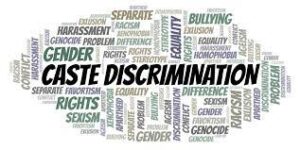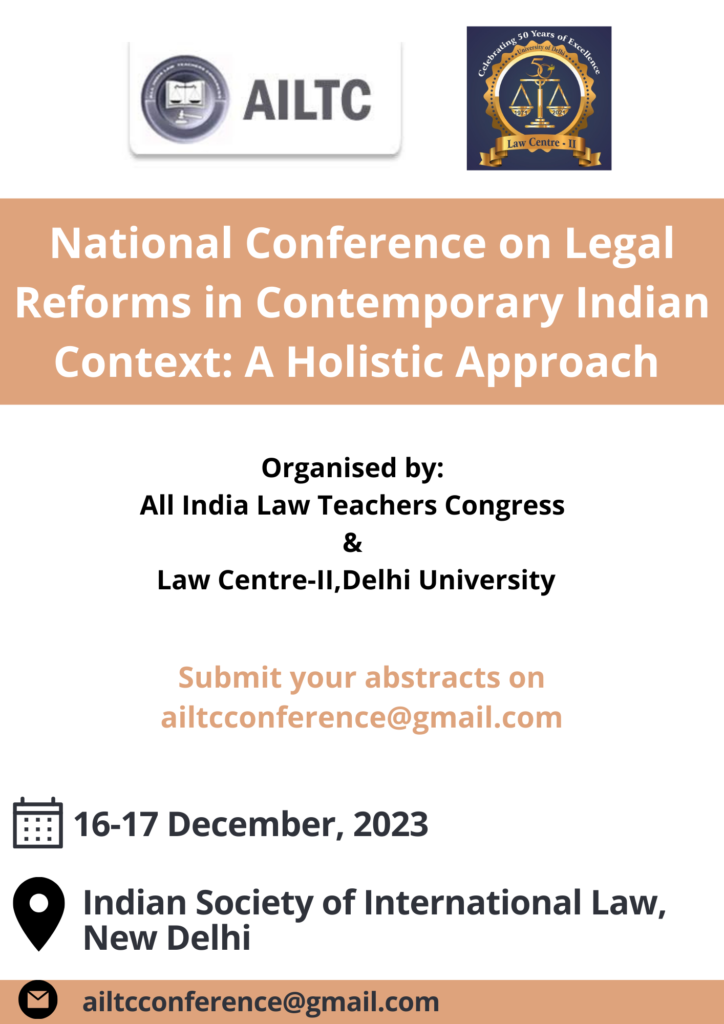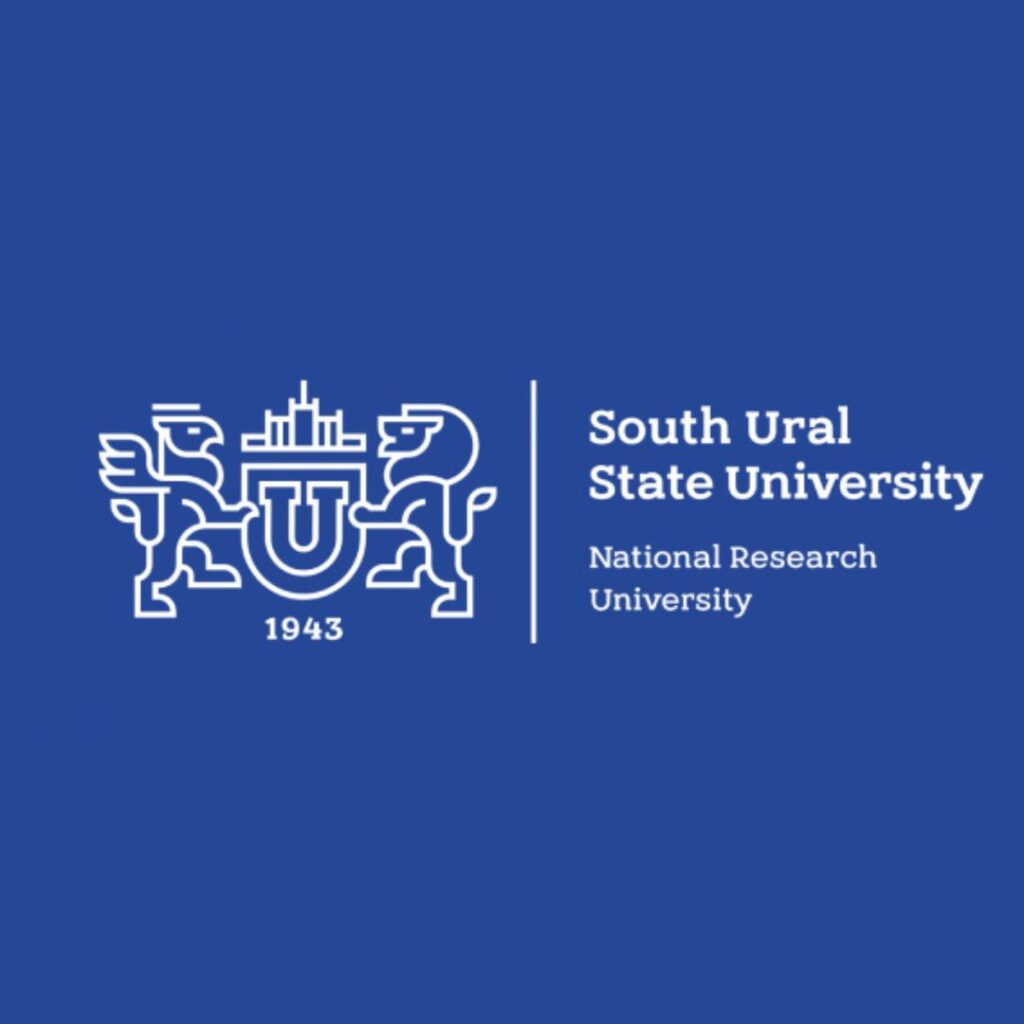Although India’s rich civil rights past has served as a source of inspiration for freedom movements throughout, a significant portion of India’s 160 million Dalits, often known as “Untouchables,” continue to endure severe caste prejudice. Dalits not only face physical and sexual violence but they are also subjected to the practice of segregation in restaurants, where they are compelled to use separate containers for eating and drinking. Furthermore, they are obligated to attend separate religious services, endure long journeys to access water and work under horrible circumstances. After the recent seismic event in western India, the local authorities segregated the beneficiaries of assistance based on their caste affiliations and redirected the aid away from Dalits towards individuals belonging to higher castes. Despite the presence of comprehensive safeguards against caste discrimination in Indian law, the government continues to neglect its responsibility to uphold the rights of Dalits, both within the country and following international obligations. Who are the Dalits? Dalits, literally meaning “broken people” or “oppressed” in Hindi, are the lowest members of the Hindu caste system in India. The caste system is a Hindu hierarchical class structure with roots in India extending back thousands of years. In descending order, the caste system consists of Brahmins (priests), Kshatriyas (warriors), Vaisyas (farmers), Shudras (labourer-artisans), and the Dalits, who are deemed so dirty they are beyond caste. Traditionally, caste, determined by birth, defined whom one may marry and the vocation one might follow. The genesis of the caste system is highly discussed among experts. The notion of Indian class divides initially arose in the Vedas, the ancient spiritual scriptures upon which Hinduism is based. According to the Vedas, a social order developed at creation from the body of Purusha, or primitive man: Brahmins from his head; Kshatriyas from his arms; Vaisyas from his thighs; and Shudras from his feet. All members of Purusha’s body symbolized the necessary aspects of a functional society. How the Vedic social order evolved into the more severe Indian caste system is uncertain. Some researchers claim Brahmins corrupted the Vedic scriptures to achieve dominance. Others claim that circa 1500 B.C., Aryan invaders formalized the caste system to dominate the indigenous population of India. In each scenario, the notion of untouchability developed at some time in the establishment of the caste system. Historically, the caste system involved a life of degradation for Dalits. For instance, Dalits undertook occupations that the rest of Indian society found ritually polluting, such as handling carcasses, disposing of human waste (also known as the practice of manual scavenging), sweeping streets, or cobbling (considered degrading because of its association with feet and leather). Dalits also faced bad treatment from members of upper castes, particularly from Brahmins. For example, Brahmins would have to bathe if a Dalit’s shadow fell on them, would not consume food made by Dalits, and would not drink from the same wells as Dalits. Dalit women often were compelled to serve as sexual servants to upper-caste males. If Dalits attempted to challenge the caste system, they endured terrible punishments such as being made to parade nude through village streets and being beaten, raped, tortured, hanged, and burned.
The Present State of Dalits
Although Article 17 of the Indian Constitution prohibited untouchability in 1950, Dalits still experience pervasive discrimination and mistreatment, particularly in villages and rural communities. Local law enforcement personnel routinely refuse to document, investigate, and respond effectively to Dalit complaints. Upper caste people often intimidate and beat Dalits who dare protest against the atrocities. Examples of persistent prejudice against Dalits include the persisting traditions of customary segregation between upper castes and Dalits. In places around India, Dalits must bring their utensils to eat or drink in restaurants so as not to pollute the utensils of high caste members. In many locations, Dalits may not drink from the same wells as upper caste members do, and may not attend temples where high-caste Hindus worship. Despite the system of quotas for government jobs, Dalits rarely progress above traditional Dalit occupations. The establishment of quotas often fosters upper-caste hatred for Dalits. In the private sector, even educated Dalits struggle to flourish. Although Indian laws are now supposed to safeguard Dalits from degradation, the reality of Dalits’ lives has scarcely changed. In many communities, upper-caste people still expect Dalits to do their traditional jobs on demand and without pay. For instance, the Indian newsmagazine The Week described the plight of a Dalit in Gujarat who gave up the trade of cobbling to become a farm hand. Despite his employment transition, upper-caste individuals still expected the former cobbler to fix shoes for free at any point of the day. When Dalits fail to comply with such upper-caste demands, they suffer violence or social boycotts that involve activities such as refusing to sell groceries to Dalits or to hire Dalit labour. Dalit children are susceptible to human rights abuses as well. These children are common victims of bonded labour abuses, even though bonded labour is prohibited in India. When Dalit families become indebted to moneylenders to pay for emergency health care or everyday subsistence needs, Dalit children are typically compelled to work off these loans. Due to the purposely low earnings these youngsters are paid, they can seldom ever earn enough money to pay back their debts and break free from their work responsibilities. Additionally, Dalit females are typically recruited for the practice of devadasi, or marriage to temple deities. As part of devadasi, these girls must serve in the temple and perform sexual services for temple workers.
Domestic Law Regarding Dalits Several clauses in Indian law, if followed, offer a multitude of protections for the Dalit population against both official and private persecutors. Article 17 of the Indian Constitution officially makes the practice of untouchability a punishable offence; Article 14 requires the State to grant equal protection of the laws to any person within the territory of India; and Article 15 prohibits discrimination based on religion, caste, gender, or place of birth. Under Article 15, the State can adopt specific protections, like as affirmative action programs, to alleviate the plight of “scheduled castes.” The term “scheduled castes” refers to a list of poor castes, such as Dalits, officially recognized by the British government in 1935 as being entitled to government protections. Article 16 particularly allows the State the ability to reserve government employment placements for members of castes that are not adequately represented in particular professions. In compliance with this constitutional mandate, the Indian government launched an affirmative action program admitting Dalits to schools and universities at lower admittance standards, awarding Dalits 22.5 per cent of all government positions, and reserving 85 of the 545 seats in Parliament for Dalits.
Domestic Movements to Improve Dalit Living Conditions In reaction to India’s failure to ensure Dalit rights, NGOs throughout India aim to ameliorate the situation of Dalits through lobbying and education efforts. Activists like Martin Macwan, Convenor of the National Campaign for Dalit Human Rights and recipient of the 2000 Robert F. Kennedy Award for Human Rights, continue to rally on behalf of Dalits to educate the domestic and international community about Dalit problems. Other groups such as the International Campaign for Dalit Human Rights, Ambedkar Centre for Justice and Peace, and the Centre for Justice and Peace in South Asia, also work to represent Dalits in the domestic and international arena. Due to the activities of these domestic human rights organizations, the UN plans to address the plight of Dalits in the August 2001 session of the Sub-Commission on the Promotion and Protection of Human Rights (Sub-Commission). The Sub-Commission passed a resolution in its 52nd session, titled “Discrimination Based on Work and Descent,” criticizing caste discrimination as a breach of human rights law and demanding the preparation of a working paper for the August 2001 conference. In September 2001, the UN will also address the status of Dalits at “The World Conference against Racism, Racial Discrimination, Xenophobia and Related Intolerance” (Conference) in South Africa. In February 2001, Indian External Affairs Minister Jaswant Singh denounced efforts to address Dalit rights during the Conference by saying, “There has regrettably been an attempt by some to dilute the focus of this conference by broadening its scope to bring all forms of discrimination within its ambit. An attempt is being made to assign racial overtones to caste. We must ensure that the conference does not lose sight of its focus on racism . . . racism should not be confused with prejudice in general.” Contrary to India’s attempts to distinguish caste discrimination from the ills of racial discrimination, both caste and racial discrimination contain invidious distinctions used to subjugate a group of people based on arbitrary traits. The impacts of these sorts of prejudice are equally devastating; therefore, the Conference is appropriately burdened with the responsibility of studying racism along with other varieties of xenophobia and intolerance. The planned agenda of the Conference includes examining the origins of intolerance, victims of intolerance, preventative actions against intolerance, redress for intolerance, and strategies for reaching full tolerance. The initiatives of the UN and the Conference are crucial steps in attracting worldwide attention to the situation of India’s Dalit community.
Conclusion
Although India has achieved tremendous progress in terms of the rights provided to Dalits since independence, Dalits still experience invidious discrimination and mistreatment at the hands of upper caste members and law enforcement authorities. Such maltreatment is deplorable under both India’s internal laws and its obligations under international law. Although the Indian government disputes the problem of mistreatment of Dalits and points to comprehensive legal protections indicating compliance with international norms, the numerous is responsible for violence and discrimination suggesting that Dalits remain India’s “broken people.” Until the crimes against Dalits end, the world community ought to continue to highlight the dire situation of India’s disenfranchised population and motivate India to live up to the standards established in its domestic laws and international duties.
References :
Cast discrimination by The International Dalit Solidarity Network (IDSN)
Introduction to Human Rights: Problems and Prospects Delhi, 2001.
Human Rights of Dalits in India Human Rights Brief 2001; 8(2):18.
The Language of Dalits Bahujan Political Discourse, in Ghanashyam (ed.), 2001.
Persistence and Perils of Caste-Based Violence in India by Drishti IAS
Written By:
Rajnish Anand Singh
5th Year BA.LLB
Jagannath University Bahadurgarh








